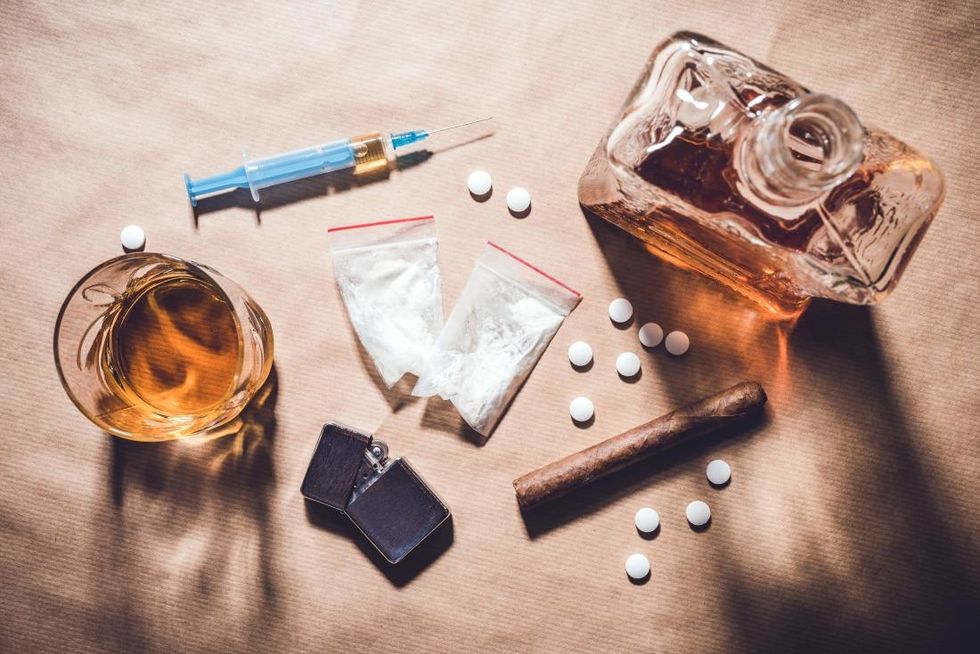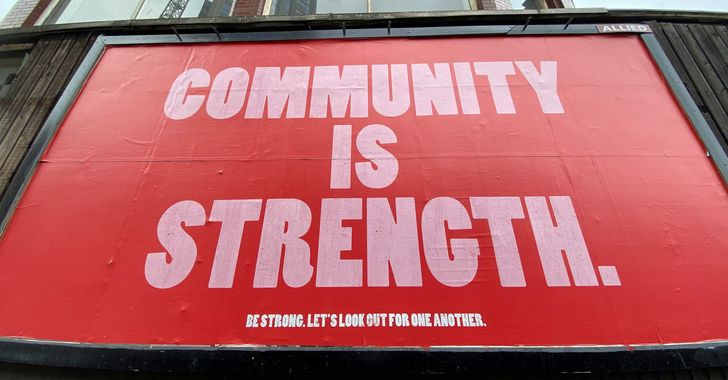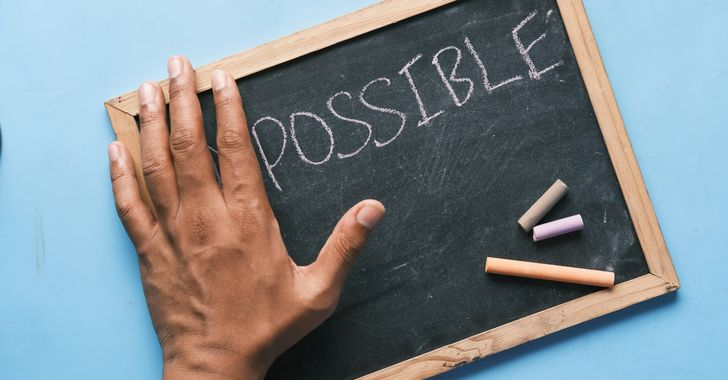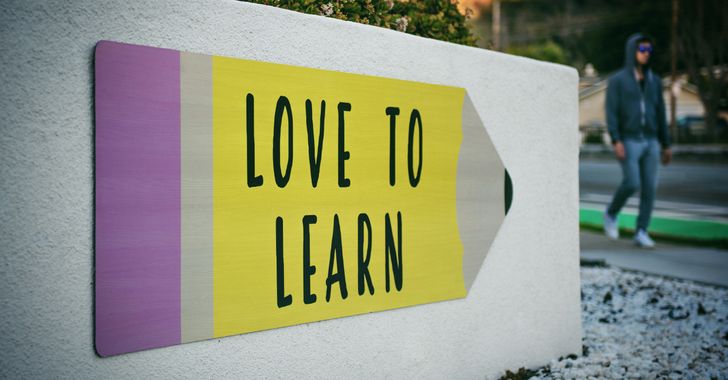Addiction kills thousands of Americans every year. Recent statistics reveal that almost 21 million Americans have at least one addiction, yet the percentage of the ones receiving treatment is nearly 10%. But perhaps what is most devastating is the fact that more than 90% of people who have an addiction started to drink alcohol or use drugs before they were 18 years old. Thus, Americans between the ages of 18 and 25 are most likely to use addictive drugs. Addiction does not affect only the life of the addicted person but also has, most of the time, disastrous impact on entire families.
What Is An Addiction?
Addiction is a psychological and physical inability of the person to stop consuming a substance or activity, even though it's causing him/her mental and physical harm. Addiction has a powerful influence on the brain. This influence usually manifests through craving for the object of addiction, loss of control over its use, and continuing involvement with it despite unfavorable consequences.
The word "addiction" does not solely refer to dependence on substances (for example, consuming heroin or cocaine), but also to the inability of a person to stop partaking in activities (for example, gambling). In the first case, the person cannot stop taking a particular drug or chemical, thus developing substance dependence. In the second, a person has a behavioral addiction.
What Causes Addiction?
Addiction today is recognized as a chronic disease that changes both brain structure and function. Scientists believe that addiction hijacks the brain, similarly, like diabetes impair the pancreas. The reason why this happens is that the brain goes through a series of changes. These changes start with a recognition of pleasure and end with a drive toward compulsive behavior.
All drugs of abuse (here we include nicotine as well) cause a powerful surge of dopamine in the nucleus accumbens. These drugs provide a shortcut to the brain's reward system by flooding the nucleus accumbens with dopamine. The brain (hippocampus) creates memories of this rapid sense of satisfaction, and the amygdala creates a conditioned response to certain stimuli.
Recent research suggests that dopamine not only contributes to the experience of pleasure but also plays a role in learning and memory. This is important since learning and memory are key elements in the transition from liking something to becoming addicted to it. Repeated use causes nerve cells to communicate in a way that connects liking something with wanting it, thus driving us to go after it. This is the reason why we take action to seek out the source of pleasure.
Over time, the brain adapts to the changes, and the sought-after substance or activity becomes less pleasurable. The brain receptors become overwhelmed, and it responds by producing less dopamine or by eliminating dopamine receptors. As a result, dopamine has less impact on the brain's reward center. Thus, the addicted person finds that, in time, the desired substance no longer gives him/her as much pleasure. The person develops tolerance, which means that he/ she has to take more of it to obtain the same dopamine "high." This is the point where compulsion takes over. The pleasure associated with the addictive drug or behavior diminishes, but the memory of the desired effect and the need to recreate it remains.
How To Treat Addiction?
According to the National Institute on Drug Abuse, treatment for drug addiction usually is not a cure, but a way to manage the addiction successfully. While some people can recover from an addiction without help, many people will require support in the form of specialized addiction treatment. The therapy enables people to counteract addiction's disruptive effects on their brain and behavior and regain control of their lives.
Most common treatment options are:
Detoxification is usually the first step for many people who've become dependent on a substance. The treatment is conducted under medical supervision and allows the body to process and remove the substance while ensuring safety.
Inpatient/residential programs offer structured and supervised 24-hour care. These programs typically last between 28 and 90 days. Their aim is to achieve symptom stability.
Sober living/halfway houses are a midpoint between a residential setting and returning home. They involve living in a less structured setting with other people in recovery from substance use. Generally, these options require employment and continued engagement in outpatient treatment.
Outpatient treatment range from an hour per month to 30 hours per week. This treatment covers many levels of care - from an individual, group, and family therapy, to intensive outpatient programs, and partial hospitalization programs.
12-step programs and group support are an informal style of treatment. They are conducted with other people in recovery, leading the meetings. They tend to focus on ideas of companionship and mentoring to treat addiction.
On a case to case basis, medication can also be a helpful tool throughout the entire recovery process. Many drugs are found to be safe and effective without adding the risk of continued or developing new addictions.
Why Is Therapy Essential in Treating Addiction?
Since addiction is more than just physical drug dependence, during the recovery process, there are social and psychological factors (stress and peer pressure), that also need to be addressed. Treatments that teach coping skills to mobilize community forces, and instill values toward prosocial behavior, have shown better success rates in ensuring an addict gets sober and stays sober. One of the most used addiction therapies are:
People struggling with substance abuse have negative and destructive thoughts. These thought patterns are extremely harmful and impact persons' mental and emotional stability. Cognitive Behavioral Therapy (CBT) is used to understand why these self-destructive actions and beliefs occur, and it enforces alternate thinking.
Motivational Interviewing is a cognitive-behavioral technique that helps individuals improve their motivation to change and become more empowered.
Eye Movement Desensitization and Reprocessing Therapy (EMDR) combines cognitive-behavioral principles with neurobiological theory. This technique confronts an individual with an anxiety-provoking stimulus/visualization in order to help them reduce their anxiety.
Dialectical Behavior Therapy (DBT) is based on cognitive-behavioral principles and used to treat individuals with numerous and severe issues, difficult to treat with other forms of therapy. The approach uses individual therapy, group therapy sessions focusing on psychoeducation, a group practice of techniques for change, and the belief that patients have accessibility to therapists when they need them.
Community Reinforcement and Family Training (CRAFT) is a set of therapeutic techniques taken from the community reinforcement approach (CRA) and applied to the substance-abusing population. CRAFT works with the concerned significant others so that they can assist the identified patients.
Multidimensional Family Therapy is a family-based treatment for adolescents with substance abuse problems. The program consists of outpatient, multi-component therapy provided by trained therapists in both individual and family settings.
Based on scientific research, no one approach is appropriate for all people treating addiction. Majority of people benefit from using several different modes of treatment depending on their abused substance and severity of the addiction.





 people sitting on chair in front of computer
people sitting on chair in front of computer



 all stars lol GIF by Lifetime
all stars lol GIF by Lifetime two women talking while looking at laptop computerPhoto by
two women talking while looking at laptop computerPhoto by  shallow focus photography of two boys doing wacky facesPhoto by
shallow focus photography of two boys doing wacky facesPhoto by  happy birthday balloons with happy birthday textPhoto by
happy birthday balloons with happy birthday textPhoto by  itty-bitty living space." | The Genie shows Aladdin how… | Flickr
itty-bitty living space." | The Genie shows Aladdin how… | Flickr shallow focus photography of dog and catPhoto by
shallow focus photography of dog and catPhoto by  yellow Volkswagen van on roadPhoto by
yellow Volkswagen van on roadPhoto by  orange i have a crush on you neon light signagePhoto by
orange i have a crush on you neon light signagePhoto by  5 Tattoos Artist That Will Make You Want A Tattoo
5 Tattoos Artist That Will Make You Want A Tattoo woman biting pencil while sitting on chair in front of computer during daytimePhoto by
woman biting pencil while sitting on chair in front of computer during daytimePhoto by  a scrabbled wooden block spelling the word prizePhoto by
a scrabbled wooden block spelling the word prizePhoto by 
 StableDiffusion
StableDiffusion
 StableDiffusion
StableDiffusion
 StableDiffusion
StableDiffusion

 women sitting on rock near body of waterPhoto by
women sitting on rock near body of waterPhoto by 
 Photo by
Photo by  Photo by
Photo by  Photo by
Photo by  Photo by
Photo by  Photo by
Photo by  Photo by
Photo by  Photo by
Photo by  Photo by
Photo by  Photo by
Photo by  Photo by
Photo by 



